Abstract
The AutoMicrobic System is an automated, computerized instrument that uses highly selective media and an optical system for detection, enumeration, and identification of bacteria and some yeasts in 13 h. A preprototype instrument (AutoMicrobic System-1) and its urine culture kit (Identi-Pak), developed for the detection, enumeration, and identification of eight species or groups of bacteria and of Candida species and Torulopsis glabrata in urine specimens, was evaluated during its development. An overall agreement of approximately 90% between the preprototype instrument and conventional (manual) culture methods has been obtained both with 1,473 seeded (simulated) and 1,688 clinical (mono- or polymicrobial) specimens containing 70,000 (or more) colony-forming units per ml of Escherichia coli, Klebsiella-Enterobacter species, Proteus species, Citrobacter freundii, Serratia species, group D enterococci, or yeasts (Candida species and T. glabrata). Lower agreements in identification were obtained with Pseudomonas aeruginosa-containing (average of 75% in clinical specimens) and Staphylococcus aureus-containing (76%) specimens. Comparison of specimens tested simultaneously in two preprototype systems resulted in ⋜4% disagreement; true negativity agreements in all specimen groups tested were at least 94%. Among problems remaining are adaptation of system for specimens other than urine, improvement of sensitivity for P. aeruginosa and S. aureus, and standardization of manual methods used for comparison and validation.
Full text
PDF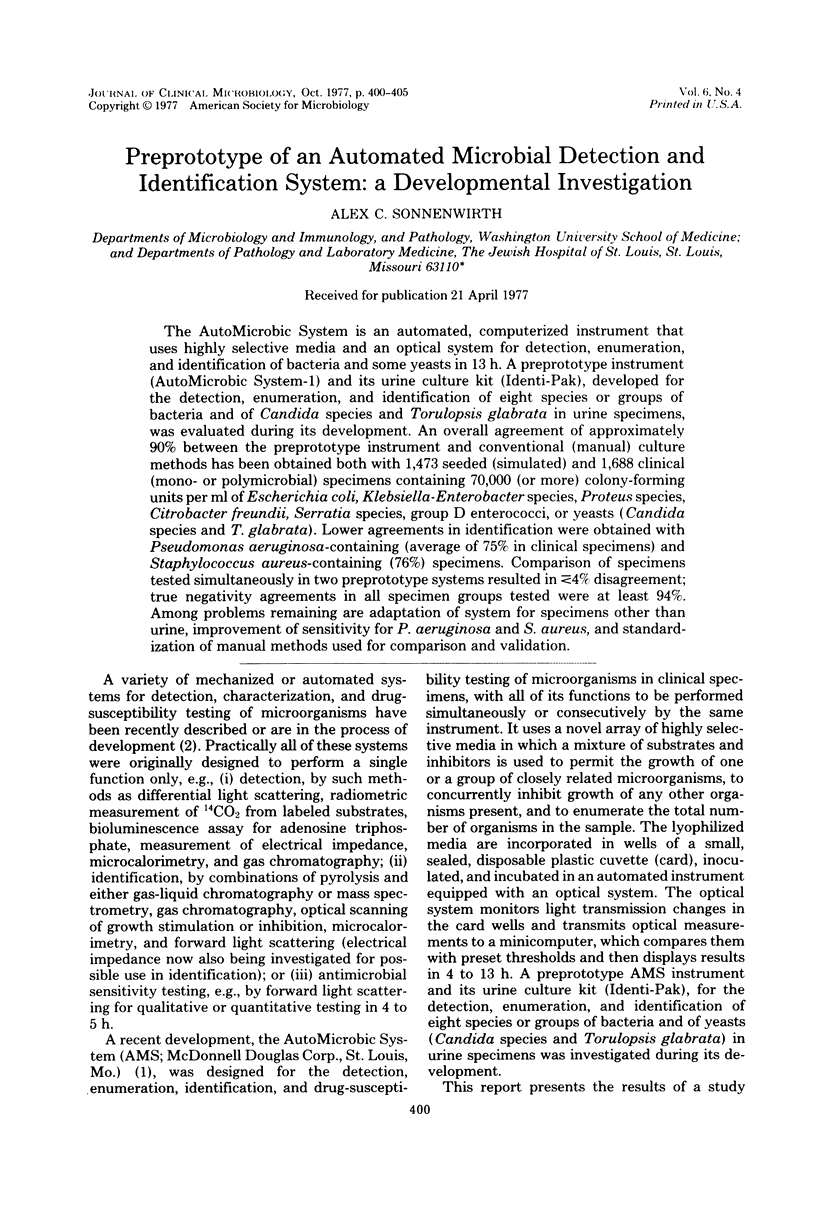
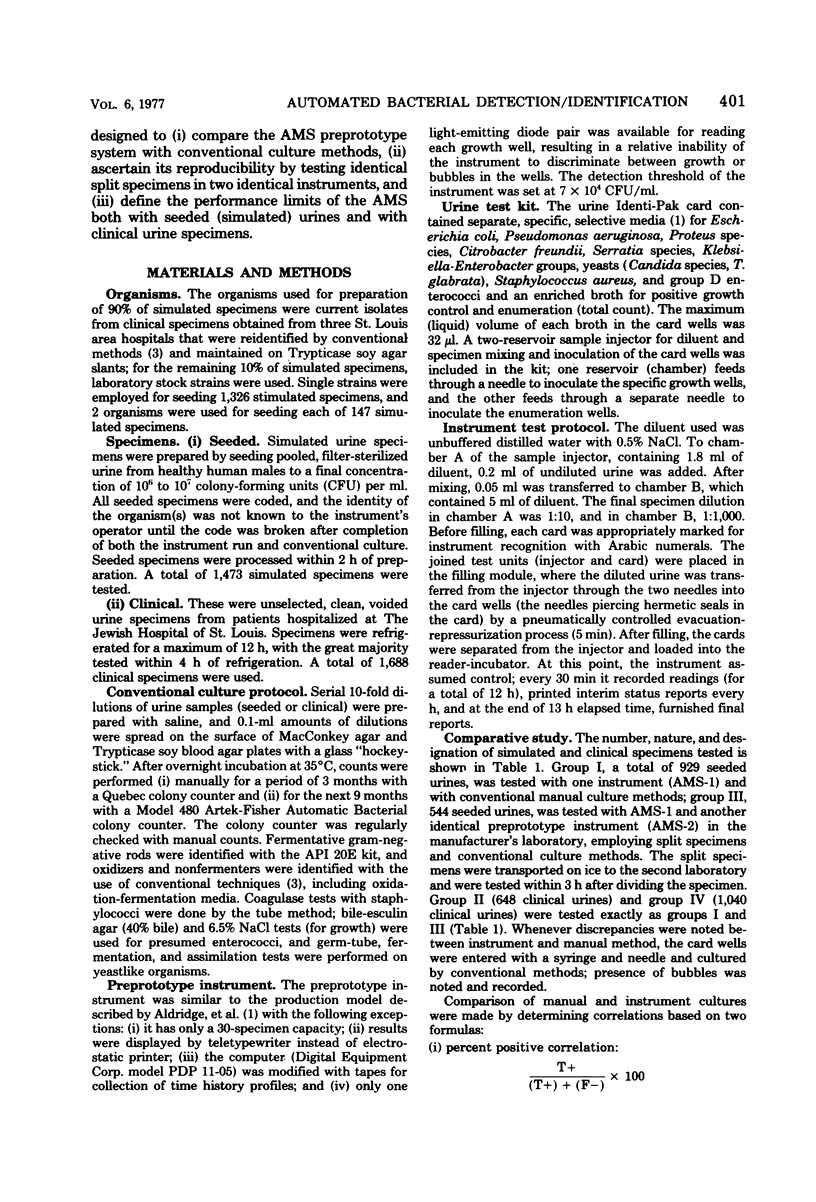
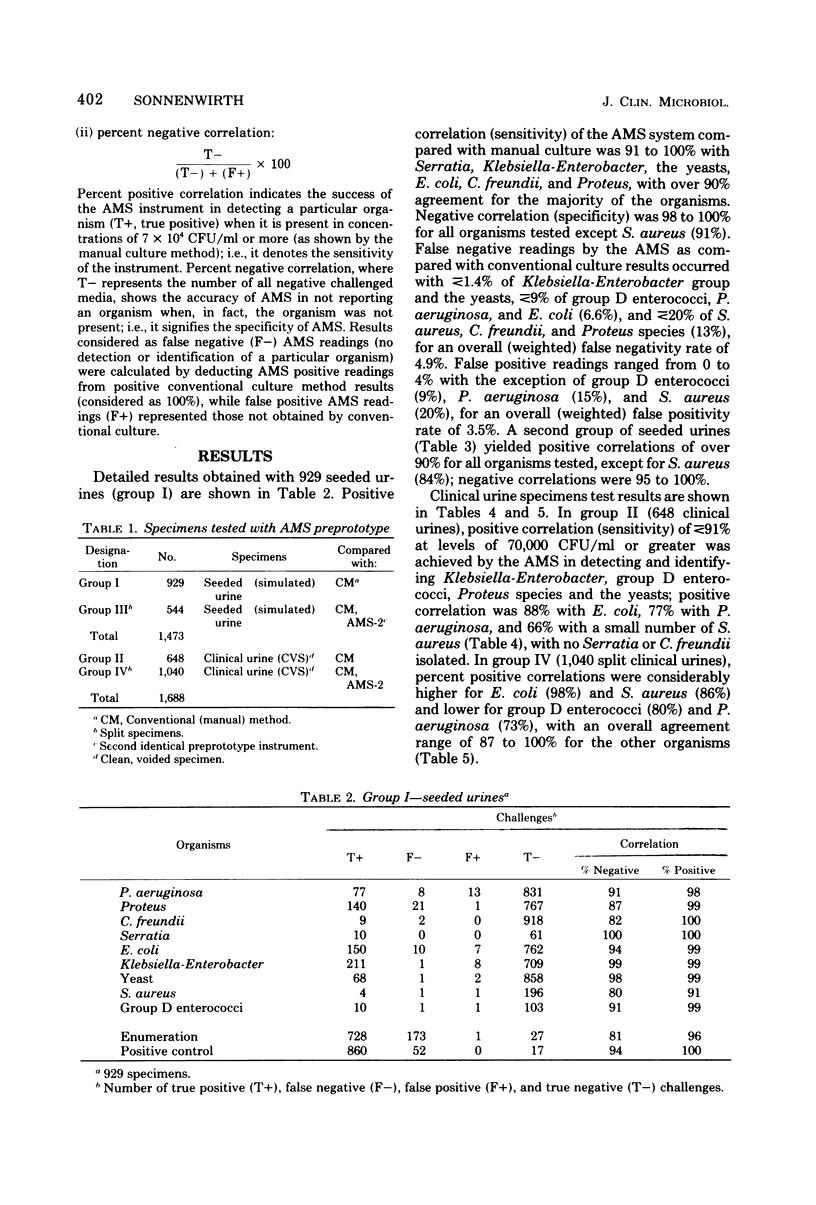
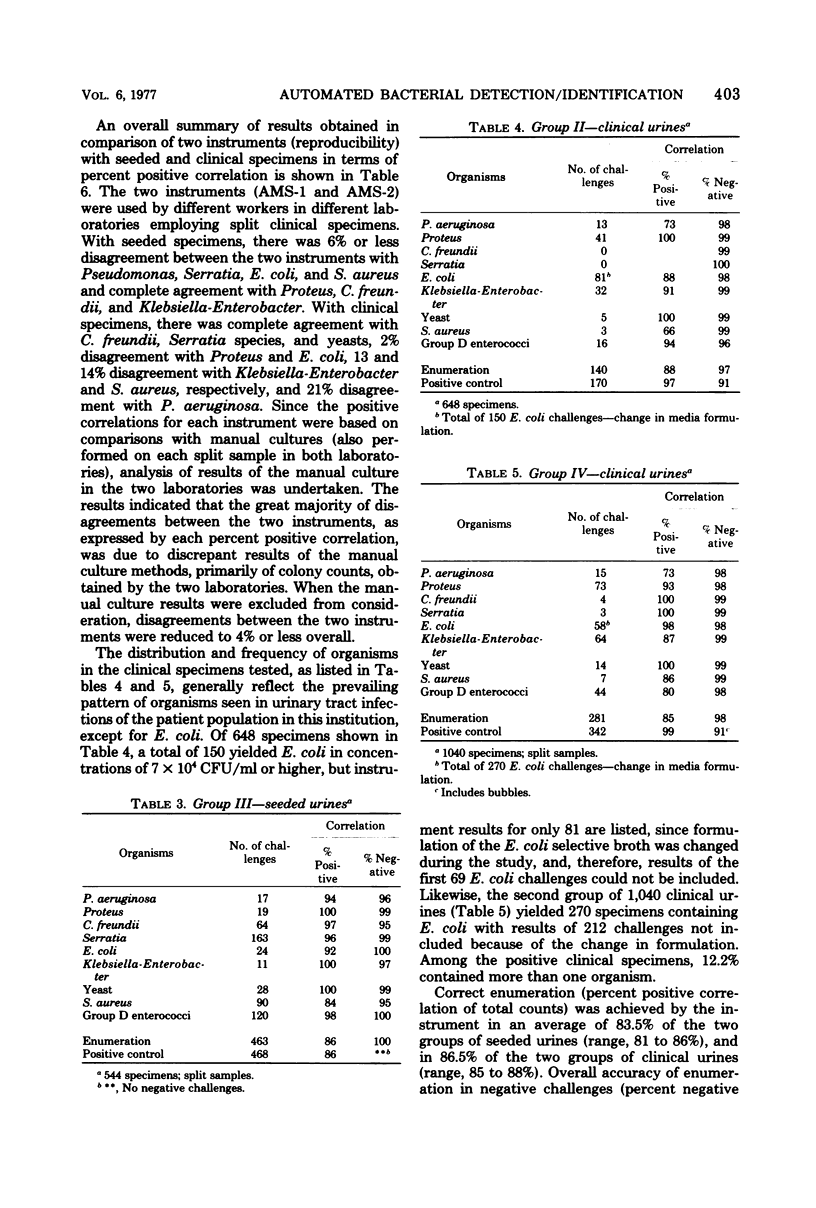
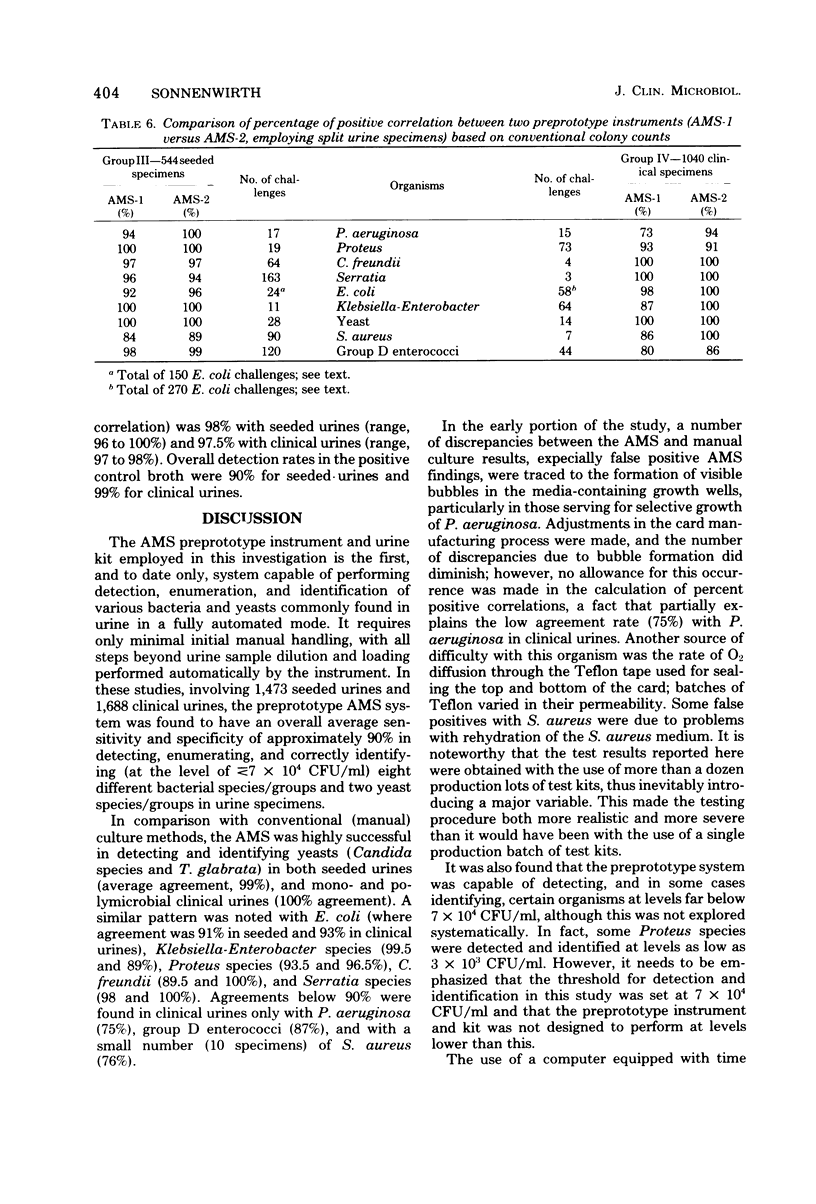
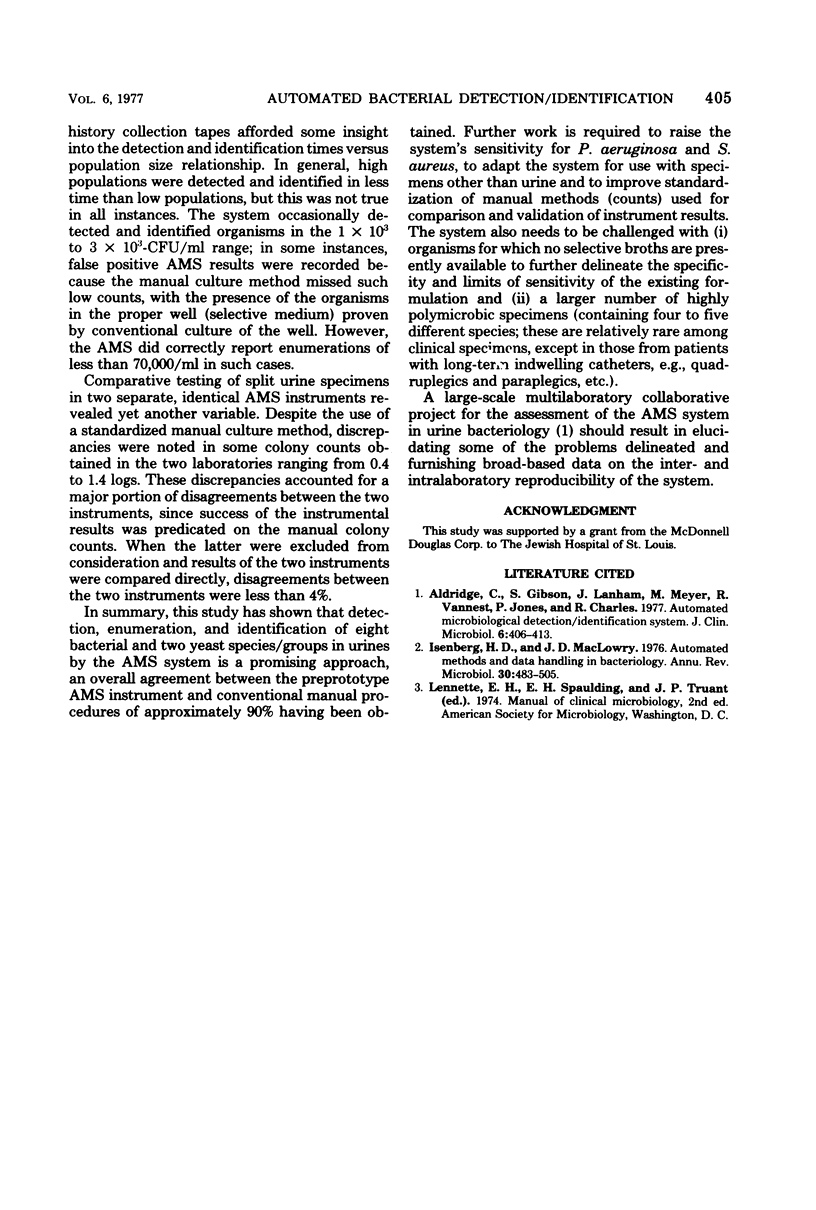
Selected References
These references are in PubMed. This may not be the complete list of references from this article.
- Aldridge C., Jones P. W., Gibson S., Lanham J., Meyer M., Vannest R., Charles R. Automated microbiological detection/identification system. J Clin Microbiol. 1977 Oct;6(4):406–413. doi: 10.1128/jcm.6.4.406-413.1977. [DOI] [PMC free article] [PubMed] [Google Scholar]
- Isenberg H. D., MacLowry J. D. Automated methods and data handling in bacteriology. Annu Rev Microbiol. 1976;30:483–505. doi: 10.1146/annurev.mi.30.100176.002411. [DOI] [PubMed] [Google Scholar]


